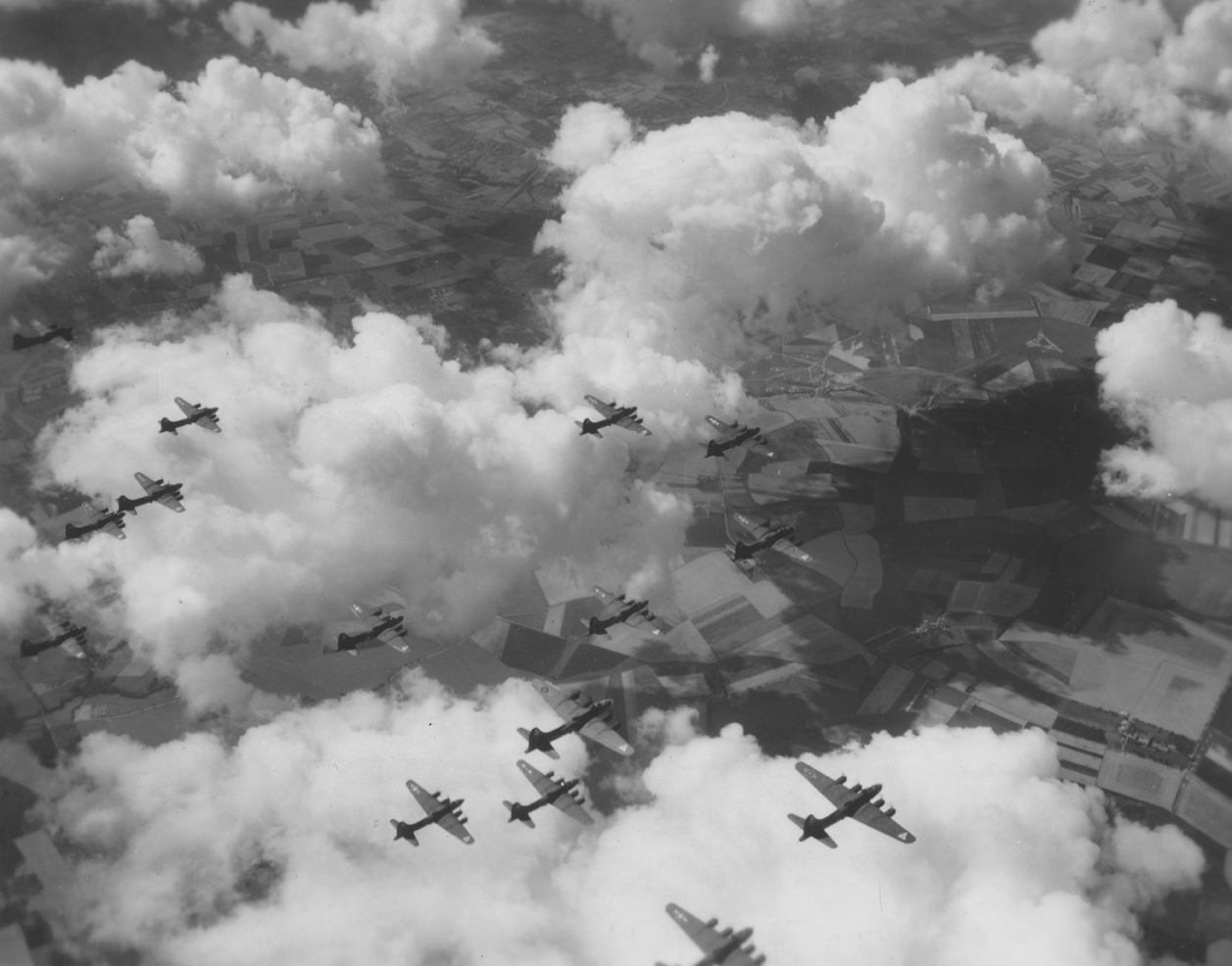 During 1943 and the early part of 1944, U.S. heavy bombers regularly launched raids on German cities, as well as manufacturing and seaport centers in Italy and countries occupied by Germany. These missions were much tougher than USAAF leaders had anticipated. Per their precision bombing doctrine the bombers flew during the daytime, exposing themselves to flak and especially German fighter attacks. Because of their limited range, American fighters based in Britain could escort and protect the bombers only so far–not much further than the German border–before having to turn back, leaving the bombers to fend for themselves as they continued on to targets deep in Germany.
During 1943 and the early part of 1944, U.S. heavy bombers regularly launched raids on German cities, as well as manufacturing and seaport centers in Italy and countries occupied by Germany. These missions were much tougher than USAAF leaders had anticipated. Per their precision bombing doctrine the bombers flew during the daytime, exposing themselves to flak and especially German fighter attacks. Because of their limited range, American fighters based in Britain could escort and protect the bombers only so far–not much further than the German border–before having to turn back, leaving the bombers to fend for themselves as they continued on to targets deep in Germany.

Throughout 1943, bomber units suffered heavy losses and turnover was high, as new men replaced those killed or captured. USAAF bomber crewmen had at least as high a chance of getting killed in action as U.S. Marines fighting the famously ferocious battles against Japan in the Pacific. German anti-aircraft guns regularly damaged or shot down planes, and killed or wounded crewmen. German fighters were more dangerous, and USAAF raids regularly provoked gigantic air battles over Germany. Big formations of B-17s and B-24s endured endless attacks, their gunners frantically trying to fend off the Nazi fighters while watching comrades’ planes break up or spiral down in flames. The worst losses were over Germany, where U.S. fighters couldn’t help the bombers. USAAF bomber men rightly feared determined attacks by skilled German fighter pilots, who were often thorough combat veterans. Luftwaffe pilots faced a hail of machine gun fire to attack bomber formations, but often shot down USAAF bombers down. If they weren’t killed, USAAF crews were equally likely to become prisoners of the Third Reich, after “bailing out” of doomed airplanes in the skies over occupied Europe.
This video, put together by the National World War II Museum, includes first-hand accounts from U.S. bomber veterans and describes how dangerous Luftwaffe fighters were even to the heavily-armed bombers:

To make things harder for the Luftwaffe and flak gunners on the ground, the bombers flew very high, around 27,000 feet. At that altitude temperatures were often sub-zero and the air was too thin to breath, so crews had to wear heavy and constricting cold weather gear, and oxygen masks. Frostbite injuries were common, and death from oxygen starvation was possible.
Amidst these dangers and distractions, bomber crewmen had to very carefully operate sophisticated machinery. Flying the most complex aircraft in service at the time, pilot and co-pilot had to monitor four engines and other systems, while acting as commander to the rest of the crew. Meanwhile, they kept the plane in formation with the others so close as to be dangerous even in peacetime–typically 50 feet intervals–for mutual protection. Gunners had to accurately shoot at enemy fighters, while not hitting other bombers, and also maintain radios or keep an eye on parts of the plane. Bombsights, radar, and navigation equipment meant more complicated tasks in cold, noisy, and cramped conditions. Bomber crews watched each other for signs of oxygen depravation and when things went badly, tried to administer first aid in freezing temperatures.
A B-17 or B-24 bomber was actually a collection of systems, most of which had to be monitored and maintained by someone on board. All this was in addition to piloting, navigating, or fighting off German fighters.

Most bomber crewmen were not much older than today’s college students: between ages 18 and 25. They were aware that their bombs killed and wounded people on the ground, but their focus on completing the mission, surviving, and taking care of one another often crowded out bigger ethical concerns at the time.
For the USAAF bomber force, missions to attack anti-friction bearing factories at Schweinfurt in September and October 1943 were some of the worst. Bearings, a vital component in many kinds of machines, were an obvious target in a war plan designed to strike weak-points in an industrial economy. Over 200 B-17s took part in each raid, facing swarms of German fighters and a hail of flak fire. The USAAF lost 101 heavy bombers and nearly 1,000 crewmen in the two missions. Other missions featured losses almost as grim. In just three months in 1943, US forces based in Britain lost 358 bombers to German flak and fighters.
Equally tragic, U.S. bombers often hit much more than their intended targets with their bombs When practicing in the United States, on a clear day and dropping bombs from 10,000 feet, bomber men were proud of how tightly they could place their bombs in a desired space on the ground. Flying at 27,000 feet, while German gunners and pilots tried to kill them, aiming bombs was much more difficult. Falling from that altitude, the bombs had plenty of time to be scattered or put off course by crosswinds. European skies are frequently cloudy or overcast, and 1940s Europe, especially at war, produced a lot of air pollution. These conditions made factories or refineries difficult to see through a bombsight lens.
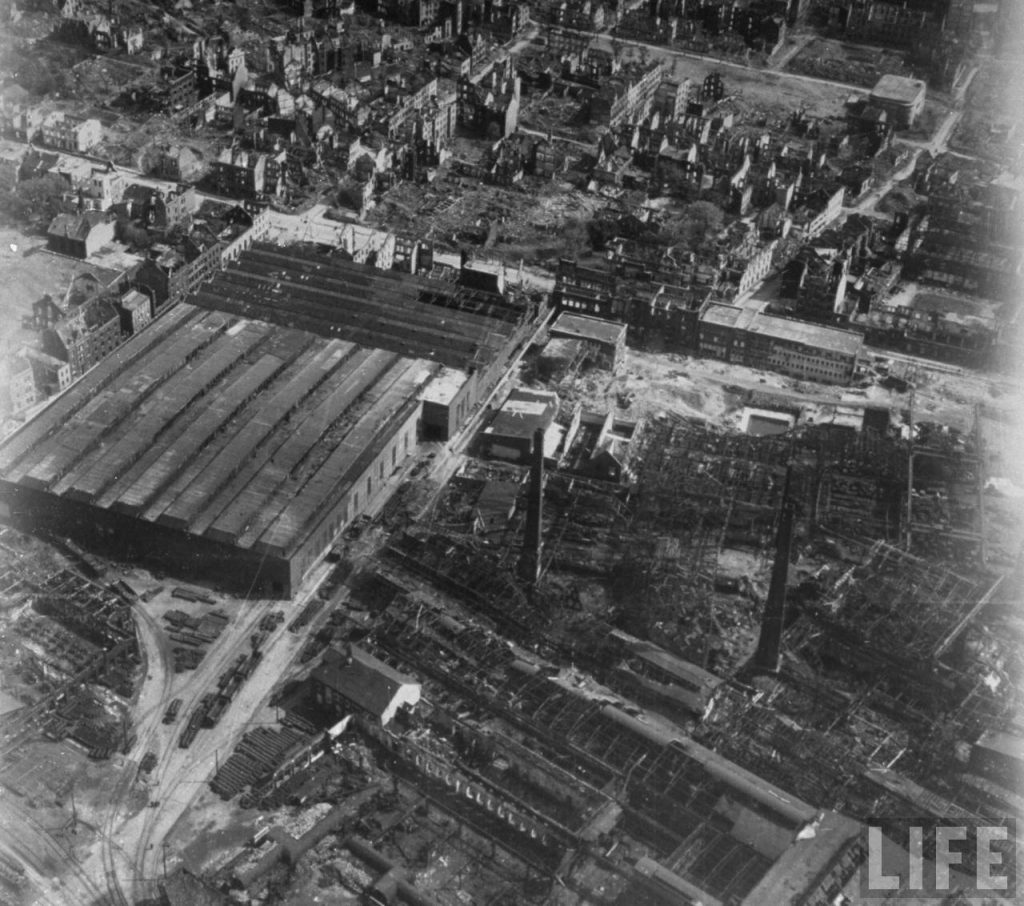
To bomb in cloudy weather, the USAAF employed new, but less accurate technology. Radar could detect things on the ground as well as in the air, and by 1942 radar sets small enough to operate on airplanes were available. But these were crude, and even a good operator struggled to pick out targets amidst the clutter on his radar screen. U.S. bombers could often identify cities, but less often identify industrial targets within cities. By using radar to aim bombs, historian Michael Sherry points out, USAAF bomber men essentially concluded that “It was preferable to bomb badly rather than not at all.”
Because they needed to fly close together for mutual protection, the bombers were arrayed in large formations, both along and across the direction of flight. Bomber crews didn’t dare leave this formation if they could avoid it, even when dropping bombs over the target. The lead crew did the aiming, and the formation dropped all their bombs when the lead plane did. This meant for a very wide pattern of bombs hitting the ground.
Over occupied Europe, USAAF airmen found that bombing precisely was difficult in the best conditions, and often practically impossible. In 1943, less than one in five bombs landed within a thousand feet of the aiming point. Some bombs hit the target, damaging or destroying factories, railroad yards, and refineries, and causing the destruction the bomber men intended. Many others fell in surrounding neighborhoods, blowing apart houses, shops, churches, parks, and schools, and starting fires. Although many had prior warning and sought cover in shelters, lots of civilians were inevitably killed by this rain of high explosives.
American airmen were aware of the destruction they caused on the ground. Bomber crews watched it happen, and reconnaissance planes, photographing the target, helped Army Air Force leaders assess the damage from afar. It was obvious that their bombing was not as accurate as they anticipated. U.S. bomber commander Carl Spatz admitted that U.S. strategic bombing was precise ”in a relative sense and not a literal sense.” Effectively the USAAF’s attempts at precision bombing produced results not radically different from the RAF’s nighttime raids. But American bomber men and their leaders never halting the bomber offensive. They concluded that precision was a preferable, but only occasional possibility, and that greater German civilian losses were acceptable.
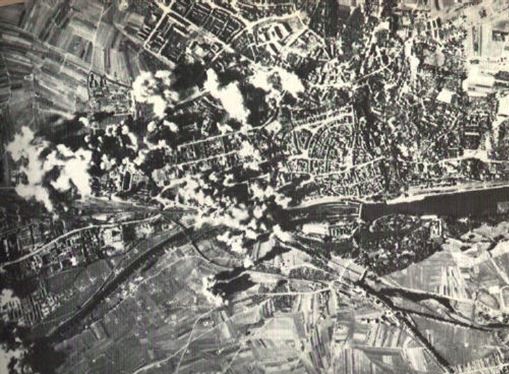
Until mid-1944, RAF and USAAF raids did not do lasting or crippling damage to the German war effort. U.S. heavy bombers frequently mauled industrial targets, but their bombs only temporarily damaging the Nazi war industry. Again, the Schweinfurt Raids of 1943 are instructive: Despite the terrible beating the bombers took on the way to and from the target, the B-17 crews smashed several ball bearing plants, slowing production there at least for several months. But the Schweinfurt raids did not result in a critical shortage of bearings in the Reich. German industry already had stockpiles of bearings to work with. Manufacturers redesigning machinery so it could use simpler, easier-to-manufacture bearings. When rebuilding, German authorities dispersed production so it was not so vulnerable to aerial bombing.
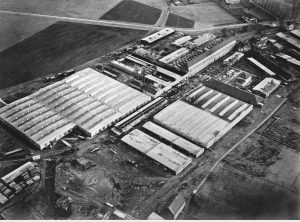
Similarly, USAAF bombers bombed aircraft factories in places like Marienburg, Regensburg, and Erla but the Germans repaired these plants, and dispersed additional production across the countryside. The Maybach Motorenbau works in Friedrichshafen, which produced engines for tanks and halftracks, was unable to produce finished motors for four months after RAF and USAAF raids in 1944. But the battered factory produced motor parts after two weeks, and the Germans moved the remaining assembly process to other plants. While the raids robbed Germany of several thousand Maybach engines it did not result in a shortage that hindered armored vehicle production. In sum, the Allies underestimated how quickly the Germans could repair and adapt their industry.
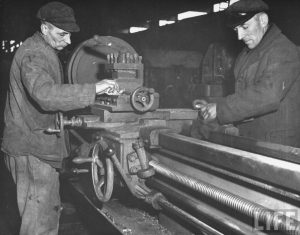
In many industries the machine tools used for production had to be quite sturdy so they could do precision cutting, drilling, or other work. Bombed factory buildings were ruined, but machine tools could be dug out of the rubble, repaired, and used again. Slave laborers, including prisoners of war (POWs), increasingly populated Germany industry, brutalized by their Nazi masters and also occasionally killed by Allied bombs. (One of the attacks on the Maybach plant killed 93 POWs.) Repairs, replacements, and reorganization of industry took time, and production was often slowed or even stopped for weeks or months. But it wasn’t until mid-1944 that the Germans suffered lasting and crippling damage to their economy.
In fact, production of some weaponry and resources within the Third Reich, such as aircraft and armored vehicles, increased into 1944. Germany had not begun mobilizing and retooling its entire economy to fight World War II until 1942, when it became clear that to Nazi leadership that the war would last a long time. So while Allied bombers damaged German industries, the German economy as a whole was becoming more capable of producing war materiel.

